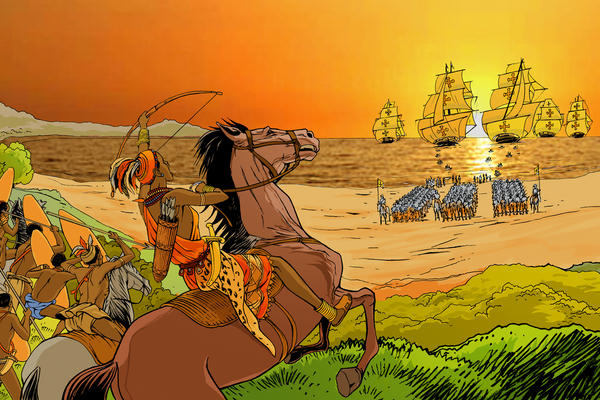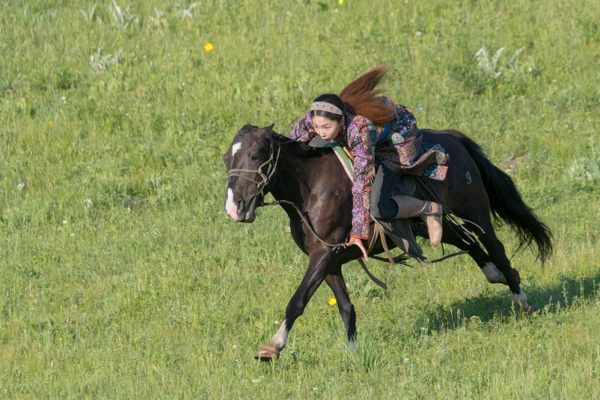Warheads & Reactor Cores: Cuba’s Nuclear Legacy
Cuba is a nation of retro-tech and 1950s automobiles, as well as a largely manual agricultural system. It may be hard then, to now picture this Caribbean island as a nuclear power. And yet, for a brief time, that’s exactly what it was.
It was the Soviet influence in Cuba that led to the island’s radical nuclear armament in the early 1960s — a series of events now referred to as the Cuban Missile Crisis. Even today, Cuba’s nuclear legacy stands in sharp silhouette against its tropical beaches, its holiday resorts, and hotels. It’s a shadow of the former USSR on the very doorstep of the USA, a mark that stands testament to the reach and influence of the Soviet Union at its prime.
One of the missiles on display outside Havana (photograph by Darmon Richter)
Medium & intermediate sized nuclear missiles (photograph by Darmon Richter)
The first nuclear materials arrived in Cuba in 1962. It was a time of saber rattling between the East and West, and under the lead of Fidel Castro, the newly declared socialist Republic of Cuba was building ever-closer ties with Moscow.
After the US deployed nuclear weapons in both Turkey and Italy, Soviet Premier Nikita Khrushchev suggested the placement of similar missiles in Cuba as a deterrent. What followed was perhaps the most heated 13 days of the Cold War, until negotiations between Moscow and Washington eventually reached an agreement, and the nuclear missiles in Italy and Turkey as well as Cuba were dismantled.
Castro, who had repeatedly expressed his strong desire to launch a nuclear strike on the US, woke up to the humiliating realization that Cuba had served purely as a pawn in a much larger game. Even after the Soviets removed their nuclear payload, the Cuban regime kept their delivery systems (an arsenal of medium- and intermediate-range ballistic nuclear missiles) on proud display. They stand now on ceremony just outside Morro Castle, a colonial fortification which guards the entrance to Havana Bay.
Soviet aircraft outside Morro Castle (photograph by Darmon Richter)
This larger missile was designed to target Washington DC (photograph by Darmon Richter)
A Soviet MiG fighter jet in Cuba (photograph by Darmon Richter)
But these missiles — now just painted shells bearing hammers, sickles, and the faded letters CCCP — were not the only nuclear ghosts the Soviets left behind in the Caribbean.
In 1976, the USSR and Cuba signed an agreement to build a twin-reactor nuclear power station on the southern coast of the island. The creation of the plant would have offered a vast boost to Cuba’s economy and power grid; the completion of the first reactor alone was set to provide for more than 15% of Cuba’s energy needs.
Construction of the nuclear plant at Juragua began in 1983, and with it came the founding of “Ciudad Nuclear” — a brand new city built close to the reactors, and designed to house site workers and their families.
Distant view of the Juragua power station (photograph by Darmon Richter)
“Ciudad Nuclear” – Cuba’s nuclear city (photograph by Darmon Richter)
Not everyone was in favor of the plan to bring nuclear power to Cuba, however. The United States tried hard to block the project, due to the close proximity of the site to Florida. No doubt their concerns must have multiplied a thousand-fold in 1986, when another Soviet nuclear reactor went into critical meltdown at Chernobyl.
Cuba’s neighbors were soon granted respite, as the project was scrapped in 1992. The fall of the Soviet Union cut lines of trade and funding with its Caribbean allies, and Cuba’s nuclear dreams were shattered long before any uranium atom could meet a similar fate.
The scars of the project remain to this day in the form of an odd concrete dome on the Cuban coast that looks somewhere between a factory and a mosque. The first reactor chamber occupies a vast, plain cylinder, rising to a height of 16 floors above the ground. According to some of the locals, it descends for an equal distance into its unseen subterranean depths. The second reactor barely made it higher than two levels.
Inside the pumping station (photograph by Darmon Richter)
The first reactor (photograph by Darmon Richter)
The second reactor (photograph by Darmon Richter)
Today, Ciudad Nuclear stands as a near ghost town, the small handful of residents scattered between the empty, unfinished towers of this ill-fated future metropolis; Cuba’s own Pripyat.
Unlike Pripyat, the earth was never poisoned, but the remote location of Ciudad Nuclear, the lack of infrastructure and amenities, almost guarantees that those unfinished apartment blocks will never be completed. The few people who live here mostly commute to other towns for work, like Cienfuegos or Juragua.
The empty streets of Ciudad Nuclear (photograph by Darmon Richter)
“Socialism or Death!” (photograph by Darmon Richter)
View from an unfinished tower block in Ciudad Nuclear (photograph by Darmon Richter)
You can even get inside the Cuban nuclear power station, provided you manage to find a way past the guards. Make it inside the first reactor, past the sentries who slouch lazily beside the gates, and you’ll discover a concrete labyrinth. These bleak, grey chambers now provide a home for countless bats, as well as the hordes of land crabs that shelter here during the heat of the day.
The view from the top of the reactor is worth the climb: a rare vantage point upon the shoulders of a lost Soviet titan, a ghost of the future looking out upon the timeless waters of the Caribbean.
Main entrance to the Juragua nuclear power station (photograph by Darmon Richter)
A corridor inside the reactor (photograph by Darmon Richter)
A large chamber in the reactor tower (photograph by Darmon Richter)
Yet another concrete corridor (photograph by Darmon Richter)
View from the top of the first reactor (photograph by Darmon Richter)
Darmon Richter is a freelance writer, photographer, and urban explorer. You can follow his adventures at The Bohemian Blog, or for regular updates, follow The Bohemian Blog on Facebook.














Follow us on Twitter to get the latest on the world's hidden wonders.
Like us on Facebook to get the latest on the world's hidden wonders.
Follow us on Twitter Like us on Facebook